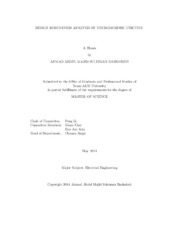| dc.description.abstract | Conventional Von Neumann architecture faces significant challenges as the device dimensions are scaled down. Power consumption and device reliability have become major concerns. Therefore, new computational paradigms are being proposed to overcome these challenges. Brain-inspired computing has emerged as a promising direction in that regard. Its massive-parallelism, potential for scalability, and power efficiency make it attractive. In addition, neuromorphic computing has shown better performance in complex tasks such as pattern recognition.
Few attempts have been made to investigate the effect of silicon failures beyond the circuit level. In this thesis, a method is proposed to evaluate the impact of process and environmental variations on the overall performance of biologically inspired spiking neural networks. In this method, transistor-level and behavioral level analysis are carried out. Then, the results of the transistor-level simulation is mapped to the application layer to determine effect of variability on the performance of the system.
Monte Carlo analysis of a brain-inspired digital neuromorphic circuit in the presence of voltage, and temperature (PVT) variations is performed. A commercial 90nm technology process is utilized to synthesize and simulate the design. The functionality of the circuit is demonstrated through a behavioral model of a neural network that implements a character recognition system. Errors are injected in the network to obtain its fault resilience characteristics. The result from PVT variations analysis are projected into a behavioral model to estimate the effect of the circuit failures on the operation of the neural network. Furthermore, the influence of key parameters on the system's performance is examined. These are the supply voltage, at the circuit level, and the structure, at the application level. The experimental results have demonstrated the robustness of the networks with respect to the targeted variation effects. | en |


